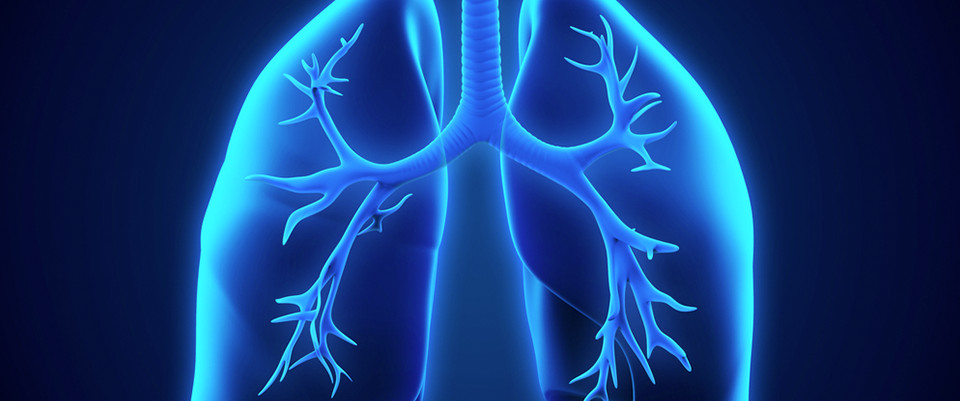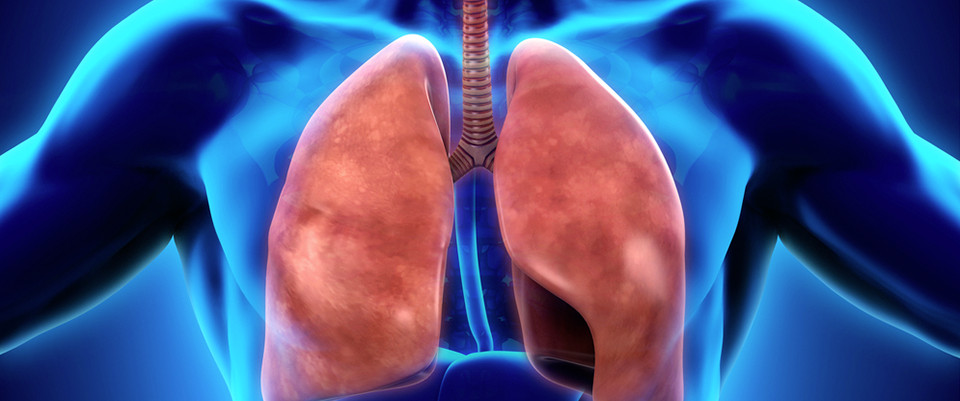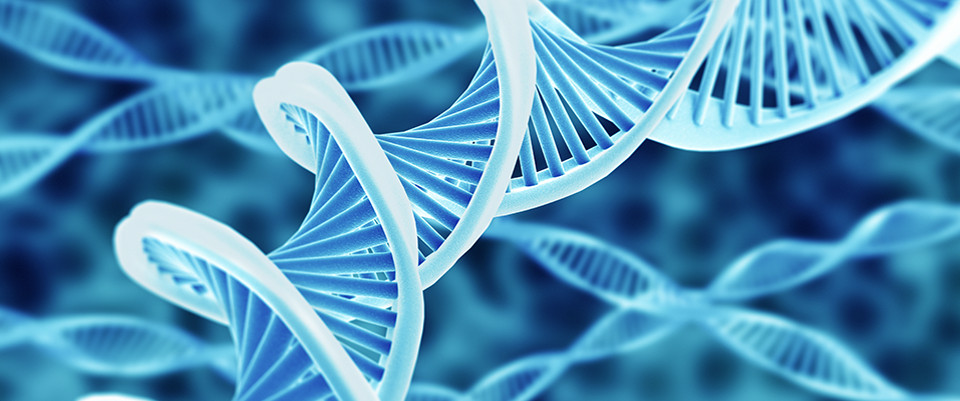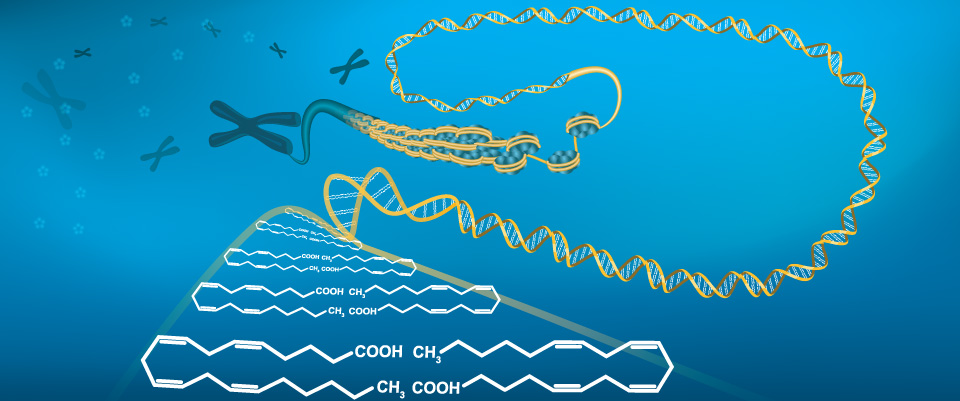PubMed
Intake of farmed Atlantic salmon fed soybean oil increases hepatic levels of arachidonic acid-derived oxylipins and ceramides in mice.
Intake of farmed Atlantic salmon fed soybean oil increases hepatic levels of arachidonic acid-derived oxylipins and ceramides in mice.
J Nutr Biochem. 2015 Feb 4;
Authors: Midtbø LK, Borkowska AG, Bernhard A, Rønnevik AK, Lock EJ, Fitzgerald ML, Torstensen BE, Liaset B, Brattelid T, Pedersen TL, Newman JW, Kristiansen K, Madsen L
Abstract
Introduction of vegetable ingredients in fish feed has affected the fatty acid composition in farmed Atlantic salmon (Salmo salar L). Here we investigated how changes in fish feed affected the metabolism of mice fed diets containing fillets from such farmed salmon. We demonstrate that replacement of fish oil with rapeseed oil or soybean oil in fish feed had distinct spillover effects in mice fed western diets containing the salmon. A reduced ratio of n-3/n-6 polyunsaturated fatty acids in the fish feed, reflected in the salmon, and hence also in the mice diets, led to a selectively increased abundance of arachidonic acid in the phospholipid pool in the livers of the mice. This was accompanied by increased levels of hepatic ceramides and arachidonic acid-derived pro-inflammatory mediators and a reduced abundance of oxylipins derived from eicosapentaenoic acid and docosahexaenoic acid. These changes were associated with increased whole body insulin resistance and hepatic steatosis. Our data suggest that an increased ratio between n-6 and n-3-derived oxylipins may underlie the observed marked metabolic differences between mice fed the different types of farmed salmon. These findings underpin the need for carefully considering the type of oil used for feed production in relation to salmon farming.
PMID: 25776459 [PubMed - as supplied by publisher]
Metabolomics in the diagnosis of sepsis.
Metabolomics in the diagnosis of sepsis.
Ital J Pediatr. 2014 Dec;40(1):396
Authors: Fanos V, Stronati M, Gazzolo D, Corsello G
PMID: 25776357 [PubMed - in process]
Fluxome study of Pseudomonas fluorescens reveals major reorganisation of carbon flux through central metabolic pathways in response to inactivation of the anti-sigma factor MucA.
Fluxome study of Pseudomonas fluorescens reveals major reorganisation of carbon flux through central metabolic pathways in response to inactivation of the anti-sigma factor MucA.
BMC Syst Biol. 2015 Dec;9(1):148
Authors: Lien SK, Niedenführ S, Sletta H, Nöh K, Bruheim P
Abstract
BACKGROUND: The bacterium Pseudomonas fluorescens switches to an alginate-producing phenotype when the pleiotropic anti-sigma factor MucA is inactivated. The inactivation is accompanied by an increased biomass yield on carbon sources when grown under nitrogen-limited chemostat conditions. A previous metabolome study showed significant changes in the intracellular metabolite concentrations, especially of the nucleotides, in mucA deletion mutants compared to the wild-type. In this study, the P. fluorescens SBW25 wild-type and an alginate non-producing mucA- ΔalgC double-knockout mutant are investigated through model-based (13)C-metabolic flux analysis ((13)C-MFA) to explore the physiological consequences of MucA inactivation at the metabolic flux level. Intracellular metabolite extracts from three carbon labelling experiments using fructose as the sole carbon source are analysed for (13)C-label incorporation in primary metabolites by gas and liquid chromatography tandem mass spectrometry.
RESULTS: From mass isotopomer distribution datasets, absolute intracellular metabolic reaction rates for the wild type and the mutant are determined, revealing extensive reorganisation of carbon flux through central metabolic pathways in response to MucA inactivation. The carbon flux through the Entner-Doudoroff pathway was reduced in the mucA- ΔalgC mutant, while flux through the pentose phosphate pathway was increased. Our findings also indicated flexibility of the anaplerotic reactions through down-regulation of the pyruvate shunt in the mucA- ΔalgC mutant and up-regulation of the glyoxylate shunt.
CONCLUSIONS: Absolute metabolic fluxes and metabolite levels give detailed, integrated insight into the physiology of this industrially, medically and agriculturally important bacterial species and suggest that the most efficient way of using a mucA- mutant as a cell factory for alginate production would be to use non-growing conditions and nitrogen deprivation.
PMID: 25775983 [PubMed - in process]
[Study on three different species tibetan medicine sea buckthorn by 1H-NMR-based metabonomics].
[Study on three different species tibetan medicine sea buckthorn by 1H-NMR-based metabonomics].
Zhongguo Zhong Yao Za Zhi. 2014 Nov;39(21):4234-9
Authors: Su YW, Tan E, Zhang J, You JL, Liu Y, Liu C, Zhou XD, Zhang Y
Abstract
The 1H-NMR fingerprints of three different species tibetan medicine sea buckthorn were established by 1H-HMR metabolomics to find out different motablism which could provide a new method for the quality evaluation of sea buckthorn. The obtained free induction decay (FID) signal will be imported into MestReNova software and into divide segments. The data will be normalized and processed by principal component analysis and.partial least squares discriminant analysis to perform pattern recognition. The results showed that 25 metabolites belonging to different chemical types were detected from sea buckthorn,including flavonoids, triterpenoids, amino acids, carbohydrates, fatty acids, etc. PCA and PLS-DA analysis showed three different varietiest of sea buckthorn that can be clearly separated by the content of L-quebrachitol, malic acid and some unidentified sugars, which can be used as the differences metabolites of three species of sea buckthorn. 1H-NMR-based metabonomies method had a holistic characteristic with sample preparation and handling. The results of this study can offer an important reference for the species identification and quality control of sea buckthorn.
PMID: 25775800 [PubMed - in process]
Probing the Metabolic Network in Bloodstream-Form Trypanosoma brucei Using Untargeted Metabolomics with Stable Isotope Labelled Glucose.
Probing the Metabolic Network in Bloodstream-Form Trypanosoma brucei Using Untargeted Metabolomics with Stable Isotope Labelled Glucose.
PLoS Pathog. 2015 Mar;11(3):e1004689
Authors: Creek DJ, Mazet M, Achcar F, Anderson J, Kim DH, Kamour R, Morand P, Millerioux Y, Biran M, Kerkhoven EJ, Chokkathukalam A, Weidt SK, Burgess KE, Breitling R, Watson DG, Bringaud F, Barrett MP
Abstract
Metabolomics coupled with heavy-atom isotope-labelled glucose has been used to probe the metabolic pathways active in cultured bloodstream form trypomastigotes of Trypanosoma brucei, a parasite responsible for human African trypanosomiasis. Glucose enters many branches of metabolism beyond glycolysis, which has been widely held to be the sole route of glucose metabolism. Whilst pyruvate is the major end-product of glucose catabolism, its transamination product, alanine, is also produced in significant quantities. The oxidative branch of the pentose phosphate pathway is operative, although the non-oxidative branch is not. Ribose 5-phosphate generated through this pathway distributes widely into nucleotide synthesis and other branches of metabolism. Acetate, derived from glucose, is found associated with a range of acetylated amino acids and, to a lesser extent, fatty acids; while labelled glycerol is found in many glycerophospholipids. Glucose also enters inositol and several sugar nucleotides that serve as precursors to macromolecule biosynthesis. Although a Krebs cycle is not operative, malate, fumarate and succinate, primarily labelled in three carbons, were present, indicating an origin from phosphoenolpyruvate via oxaloacetate. Interestingly, the enzyme responsible for conversion of phosphoenolpyruvate to oxaloacetate, phosphoenolpyruvate carboxykinase, was shown to be essential to the bloodstream form trypanosomes, as demonstrated by the lethal phenotype induced by RNAi-mediated downregulation of its expression. In addition, glucose derivatives enter pyrimidine biosynthesis via oxaloacetate as a precursor to aspartate and orotate.
PMID: 25775470 [PubMed - as supplied by publisher]
Attenuation of Postoperative Acute Liver Failure by Mesenchymal Stem Cell Treatment Due to Metabolic Implications.
Attenuation of Postoperative Acute Liver Failure by Mesenchymal Stem Cell Treatment Due to Metabolic Implications.
Ann Surg. 2015 Mar 13;
Authors: Tautenhahn HM, Brückner S, Baumann S, Winkler S, Otto W, von Bergen M, Bartels M, Christ B
Abstract
OBJECTIVE: To prevent posthepatectomy acute liver failure after extended resection by treatment with mesenchymal stem cells (MSCs).
BACKGROUND: Liver tumors often require extended liver resection, overburdening metabolic and regenerative capacities of the remnant organ. Resulting dysfunction and failure may be improved by the proregenerative characteristics of MSCs.
METHODS: Extended liver resection was performed in (DPPIV)-deficient F344-Fischer rats. Wild-type animals served as donors of peritoneal adipose-derived MSCs. These were predifferentiated in vitro into hepatocytic cells and delivered to the liver by splenic application. Liver-related blood parameters (international normalized ratio, bilirubin, aspartate aminotransferase, alanine aminotransferase) and liver histology (hematoxylin-eosin, Sudan III) were determined to monitor liver function. Metabolic changes were assessed by metabolomic analyses in the remnant liver and the serum. Liver damage and regeneration were quantified by determination of the apoptotic and proliferation rates.
RESULTS: MSCs supported survival after partial hepatectomy. They decreased liver-related blood parameters indicative for the improvement of liver function. The extensive lipid accumulation in hepatocytes illustrating the metabolic overload after resection was attenuated. Treatment with MSCs normalized imbalance of amino acids, acylcarnitines, sphingolipids, and glycerophospholipids in the liver and blood. Furthermore, MSCs decreased the apoptotic rate and increased the proliferation rate. The experimental time period (48 hours) was too short to allow for integration of MSCs into the host liver. Thus, the mode of action was probably indirect.
CONCLUSIONS: MSCs ameliorated hepatic dysfunction and improved liver regeneration after extended resection by paracrine mechanisms. They may represent a new therapeutic option to treat posthepatectomy acute liver failure.
PMID: 25775061 [PubMed - as supplied by publisher]
Modifying Effects of Vitamin E on Chlorpyrifos Toxicity in Atlantic Salmon.
Modifying Effects of Vitamin E on Chlorpyrifos Toxicity in Atlantic Salmon.
PLoS One. 2015;10(3):e0119250
Authors: Olsvik PA, Berntssen MH, Søfteland L
Abstract
The aim of this study was to elucidate how vitamin E (alpha tocopherol) may ameliorate the toxicity of the pesticide chlorpyrifos in Atlantic salmon. Freshly isolated hepatocytes were exposed to vitamin E, chlorpyrifos or a combination of vitamin E and chlorpyrifos (all 100 μM). Transcriptomics (RNA-seq) and metabolomics were used to screen for effects of vitamin E and chlorpyrifos. By introducing vitamin E, the number of upregulated transcripts induced by chlorpyrifos exposure was reduced from 941 to 626, while the number of downregulated transcripts was reduced from 901 to 742 compared to the control. Adding only vitamin E had no effect on the transcriptome. Jak-STAT signaling was the most significantly affected pathway by chlorpyrifos treatment according to the transcriptomics data. The metabolomics data showed that accumulation of multiple long chain fatty acids and dipeptides and amino acids in chlorpyrifos treated cells was partially alleviated by vitamin E treatment. Significant interaction effects between chlorpyrifos and vitamin E were seen for 15 metabolites, including 12 dipeptides. The antioxidant had relatively modest effects on chlorpyrifos-induced oxidative stress. By combining the two data sets, the study suggests that vitamin E supplementation prevents uptake and accumulation of fatty acids, and counteracts inhibited carbohydrate metabolism. Overall, this study shows that vitamin E only to a moderate degree modifies chlorpyrifos toxicity in Atlantic salmon liver cells.
PMID: 25774794 [PubMed - as supplied by publisher]
The flower tea Coreopsis tinctoria increases insulin sensitivity and regulates hepatic metabolism in rats fed a high-fat diet.
The flower tea Coreopsis tinctoria increases insulin sensitivity and regulates hepatic metabolism in rats fed a high-fat diet.
Endocrinology. 2015 Mar 16;:en20151015
Authors: Jiang B, Le L, Wan W, Zhai W, Hu K, Xu L, Xiao P
Abstract
An infusion of Coreopsis tinctoria (CT) flowering tops is traditionally used in Portugal to control hyperglycemia; however, the effects of CT protection against high-fat diet (HFD)-induced hepatic insulin resistance have not been systematically studied and the precise mechanism of action is not clear. The metabolomic profiles of insulin-resistant rats fed a HFD and a CT-supplemented diet (HFD supplemented with CT-drinking) for 8 weeks were investigated. Serum samples for clinical biochemistry and liver samples for histopathology and liquid chromatography-mass spectrometry (LC-MS)-based metabolomic research were collected. Western blot and quantitative real-time PCR (qPCR) analyses were further employed to measure the expression of several relevant enzymes together with perturbed metabolic pathways. Using MetaboAnalyst 3.0 ( http://www.metaboanalyst.ca ), the CT treatment was found to significantly ameliorate the disturbance in 10 metabolic pathways. Combined metabolomic, western blot and qPCR analyses revealed that CT treatment significantly improved the glucose homeostasis by, on the one hand through inhibiting the expression of gluconeogenic pathway key proteins G6Pase and PEPCK and, on the other hand via regulating the mRNA or protein levels of the Krebs cycle critical enzymes (CS, SDHA, and DLST). These results provide metabolic evidence of the complex pathogenic mechanism involved in hepatic insulin resistance and that the supplementation with CT improves insulin resistance at a global scale. LC-MS-based metabolomics approaches are helpful to further understand diabetes-related mechanisms.
PMID: 25774555 [PubMed - as supplied by publisher]
Unique and Shared Metabolic Regulation in Clonal β-cells and Primary Islets Derived from Rat Revealed by Metabolomics Analysis.
Unique and Shared Metabolic Regulation in Clonal β-cells and Primary Islets Derived from Rat Revealed by Metabolomics Analysis.
Endocrinology. 2015 Mar 16;:en20141391
Authors: Spégel P, Andersson LE, Storm P, Sharoyko V, Göhring I, Rosengren AH, Mulder H
Abstract
As models for β-cell metabolism, rat islets are, to some extent, a, heterogeneous cell-population stressed by the islet isolation procedure, while rat-derived clonal β-cells exhibit a tumor-like phenotype. To describe to what extent either of these models reflect normal cellular metabolism, we compared metabolite profiles and gene expression in rat islets and the INS-1 832/13 line, a widely used clonal β-cell model. We found that insulin secretion and metabolic regulation provoked by glucose were qualitatively similar in these β-cell models. However, rat islets exhibited a more pronounced glucose-provoked increase of glutamate, glycerol-3-phosphate, succinate and lactate levels while INS-1 832/13 cells showed a higher glucose-elicited increase in glucose-6-phosphate, alanine, isocitrate, and α-ketoglutarate levels. Glucose induced a decrease in levels of γ-aminobutyrate (GABA) and aspartate in rat islets and INS-1 832/13 cells, respectively. Genes with cellular functions related to proliferation and the cell cycle were more highly expressed in the INS-1 832/13 cells. Most metabolic pathways that were differentially expressed included GABA metabolism, in line with altered glucose responsiveness of GABA. Also, lactate dehydrogenase A, which is normally expressed at low levels in mature β-cells, was more abundant in rat islets than in INS-1 832/13 cells, confirming the finding of elevated glucose-provoked lactate production in the rat islets. Overall, our results suggest that metabolism in rat islets and INS-1 832/13 cells is qualitatively similar, albeit with quantitative differences. Differences may be accounted for by cellular heterogeneity of islets and proliferation of the INS-1 832/13 cells.
PMID: 25774549 [PubMed - as supplied by publisher]
Combining DI-ESI-MS and NMR datasets for metabolic profiling.
Combining DI-ESI-MS and NMR datasets for metabolic profiling.
Metabolomics. 2015 Apr;11(2):391-402
Authors: Marshall DD, Lei S, Worley B, Huang Y, Garcia-Garcia A, Franco R, Dodds ED, Powers R
Abstract
Metabolomics datasets are commonly acquired by either mass spectrometry (MS) or nuclear magnetic resonance spectroscopy (NMR), despite their fundamental complementarity. In fact, combining MS and NMR datasets greatly improves the coverage of the metabolome and enhances the accuracy of metabolite identification, providing a detailed and high-throughput analysis of metabolic changes due to disease, drug treatment, or a variety of other environmental stimuli. Ideally, a single metabolomics sample would be simultaneously used for both MS and NMR analyses, minimizing the potential for variability between the two datasets. This necessitates the optimization of sample preparation, data collection and data handling protocols to effectively integrate direct-infusion MS data with one-dimensional (1D) (1)H NMR spectra. To achieve this goal, we report for the first time the optimization of (i) metabolomics sample preparation for dual analysis by NMR and MS, (ii) high throughput, positive-ion direct infusion electrospray ionization mass spectrometry (DI-ESI-MS) for the analysis of complex metabolite mixtures, and (iii) data handling protocols to simultaneously analyze DI-ESI-MS and 1D (1)H NMR spectral data using multiblock bilinear factorizations, namely multiblock principal component analysis (MB-PCA) and multiblock partial least squares (MB-PLS). Finally, we demonstrate the combined use of backscaled loadings, accurate mass measurements and tandem MS experiments to identify metabolites significantly contributing to class separation in MB-PLS-DA scores. We show that integration of NMR and DI-ESI-MS datasets yields a substantial improvement in the analysis of neurotoxin involvement in dopaminergic cell death.
PMID: 25774104 [PubMed - as supplied by publisher]
Metabolomic composition of normal aged and cataractous human lenses.
Metabolomic composition of normal aged and cataractous human lenses.
Exp Eye Res. 2015 Mar 12;
Authors: Tsentalovich YP, Verkhovod TD, Yanshole VV, Kiryutin AS, Yanshole LV, Fursova AZ, Stepakov DA, Novoselov VP, Sagdeev RZ
Abstract
Quantitative metabolomic profiles of normal and cataractous human lenses were obtained with the combined use of high-frequency nuclear magnetic resonance (NMR) and high-performance liquid chromatography with high-resolution mass-spectrometric detection (LC-MS) methods. The concentration of more than fifty metabolites in the lens cortex and nucleus has been determined. For the majority of metabolites, their concentrations in the lens cortex and nucleus are similar, which confirms low metabolic activity in the lens core. The difference between the metabolite levels in the cortex and nucleus of the normal lens is observed for antioxidants and UV filters, which demonstrates the activity of redox processes in the lens. A huge difference is found between the metabolomic compositions of normal and age-matched cataractous lenses: the concentrations of almost all metabolites in the normal lens are higher than in the cataractous one. The most pronounced difference is observed for compounds playing a key role in the lens cell protection and metabolic activity, including antioxidants, UV filters, and osmolytes. The results obtained imply that the development of the age-related cataracts might originate from the metabolic dysfunction of the lens epithelial cells.
PMID: 25773987 [PubMed - as supplied by publisher]
Parallelized small-scale production of uniformly (13)C-labeled cell-extract for quantitative metabolome analysis.
Parallelized small-scale production of uniformly (13)C-labeled cell-extract for quantitative metabolome analysis.
Anal Biochem. 2015 Mar 12;
Authors: Weiner M, Tröndle J, Schmideder A, Albermann C, Binder K, Sprenger GA, Weuster-Botz D
Abstract
The need of quantitative intracellular metabolome information is a central requirement in modern applied biotechnology and systems biology. In most cases, sample preparation and metabolite analysis result in degradation of metabolites and signal suppression due to metabolite instability and matrix effects during LC-MS analysis. Therefore application of uniformly (U) labeled (13)C-cell-extract as internal standard has gained raising interest in recent years. In this study a multiple step protocol has been developed for efficient preparation of U-(13)C-labeled E. coli cell-extracts in stirred-tank bioreactors on a milliliter-scale with minimized supply of costly (13)C-labeled substrate. Significant reduction of fermentation media-salt concentration in the U-(13)C-labeled cell-extract was achieved to reduce ion-suppression effects during mass-spectrometric analysis. Additionally, variation of reaction conditions in parallel operated stirred-tank bioreactors on a milliliter-scale enables the simultaneous preparation of U-(13)C-labeled cell extracts with varying metabolite concentrations which was shown by the example of the labeled phosphoenolpyruvate level in E. coli.
PMID: 25772305 [PubMed - as supplied by publisher]
Warming differentially influences the effects of drought on stoichiometry and metabolomics in shoots and roots.
Warming differentially influences the effects of drought on stoichiometry and metabolomics in shoots and roots.
New Phytol. 2015 Mar 13;
Authors: Gargallo-Garriga A, Sardans J, Pérez-Trujillo M, Oravec M, Urban O, Jentsch A, Kreyling J, Beierkuhnlein C, Parella T, Peñuelas J
Abstract
Plants in natural environments are increasingly being subjected to a combination of abiotic stresses, such as drought and warming, in many regions. The effects of each stress and the combination of stresses on the functioning of shoots and roots have been studied extensively, but little is known about the simultaneous metabolome responses of the different organs of the plant to different stresses acting at once. We studied the shift in metabolism and elemental composition of shoots and roots of two perennial grasses, Holcus lanatus and Alopecurus pratensis, in response to simultaneous drought and warming. These species responded differently to individual and simultaneous stresses. These responses were even opposite in roots and shoots. In plants exposed to simultaneous drought and warming, terpenes, catechin and indole acetic acid accumulated in shoots, whereas amino acids, quinic acid, nitrogenous bases, the osmoprotectants choline and glycine betaine, and elements involved in growth (nitrogen, phosphorus and potassium) accumulated in roots. Under drought, warming further increased the allocation of primary metabolic activity to roots and changed the composition of secondary metabolites in shoots. These results highlight the plasticity of plant metabolomes and stoichiometry, and the different complementary responses of shoots and roots to complex environmental conditions.
PMID: 25772030 [PubMed - as supplied by publisher]
Tetranychus urticae-triggered responses promote genotype-dependent conspecific repellence or attractiveness in citrus.
Tetranychus urticae-triggered responses promote genotype-dependent conspecific repellence or attractiveness in citrus.
New Phytol. 2015 Mar 13;
Authors: Agut B, Gamir J, Jaques JA, Flors V
Abstract
The citrus rootstocks sour orange and Cleopatra mandarin display differential resistance against Tetranychus urticae. Sour orange plants support reduced oviposition, growth rates and damage compared with Cleopatra mandarin plants. Jasmonic acid signalling and flavonoid accumulation have been revealed as key mechanisms for the enhanced resistance of sour orange plants. In this study, we observed that the release of T. urticae herbivore-induced plant volatiles (HIPVs) from sour orange plants has a marked repellent effect on conspecific mites associated with the production of the terpenes α-ocimene, α-farnesene, pinene and d-limonene, and the green leaf volatile 4-hydroxy-4-methyl-2-pentanone. By contrast, T. urticae HIPVs from Cleopatra mandarin plants promote conspecific mite attraction associated with an increase in (2-butoxyethoxy) ethanol, benzaldehyde and methyl salicylate levels. HIPVs released from sour orange plants following T. urticae infestation induce resistance in Cleopatra mandarin plants, thereby reducing oviposition rates and stimulating the oxylipin biosynthetic gene lipoxygenase2 (LOX2). Cleopatra HIPVs do not affect the response to T. urticae of these rootstocks. We conclude that sour orange plants promote herbivore-induced resistance in Cleopatra mandarin plants and, despite the weak basal resistance of these rootstocks, herbivore resistance can be induced through the combination of HIPVs, such as α-ocimene and d-limonene.
PMID: 25771705 [PubMed - as supplied by publisher]
A metabolomic assessment of NAC154 transcription factor overexpression in field grown poplar stem wood.
A metabolomic assessment of NAC154 transcription factor overexpression in field grown poplar stem wood.
Phytochemistry. 2015 Mar 11;
Authors: Jervis J, Hildreth SB, Sheng X, Beers EP, Brunner AM, Helm RF
Abstract
Several xylem-associated regulatory genes have been identified that control processes associated with wood formation in poplar. Prominent among these are the NAC domain transcription factors (NACs). Here, the putative involvement of PopulusNAC154, a co-ortholog of the Arabidopsis gene SND2, was evaluated as a regulator of "secondary" biosynthetic processes in stem internode tissues by interrogating aqueous methanolic extracts from control and transgenic trees. Comprehensive untargeted metabolite profiling was accomplished with a liquid chromatography-mass spectrometry platform that utilized two different chromatographic supports (HILIC and reversed phase) and both positive and negative ionization modes. Evaluation of current and previous year tissues provided datasets for assessing the effects of NAC154 overexpression in wood maturation processes. Phenolic glycoside levels as well as those of oligolignols, sucrose and arginine were modulated with phenotypic and chemotypic traits exhibiting similar trends. Specifically, increased levels of arginine in the NAC154 overexpressing tissues supports a role for the transcription factor in senescence/dormancy-associated processes.
PMID: 25771508 [PubMed - as supplied by publisher]
Effect of the DGAT1 K232A genotype of dairy cows on the milk metabolome and proteome.
Effect of the DGAT1 K232A genotype of dairy cows on the milk metabolome and proteome.
J Dairy Sci. 2015 Mar 11;
Authors: Lu J, Boeren S, van Hooijdonk T, Vervoort J, Hettinga K
Abstract
Diglyceride O-acyltransferase 1 (DGAT1) is the enzyme that catalyzes the synthesis of triglycerides from diglycerides and acyl-coenzyme A. The DGAT1 K232A polymorphism was previously shown to have a significant influence on bovine milk production characteristics (milk yield, protein content, fat content, and fatty acid composition). The mechanism of this influence has, however, not been elucidated. In this study, metabolomics ((1)H-nuclear magnetic resonance) and proteomics (laser chromatography-tandem mass spectrometry) were applied to determine the serum and lipid metabolite composition and milk fat globule membrane proteome of milk samples from cows with the DGAT1 KK and AA genotypes. The milk samples from cows with the DGAT1 KK genotype contained more stomatin, sphingomyelin, choline, and carnitine, and less citrate, creatine or phosphocreatine, glycerol-phosphocholine, mannose-like sugar, acetyl sugar phosphate, uridine diphosphate (UDP)-related sugar, and orotic acid compared with milk samples from cows with the DGAT1 AA genotype. Based on these results, we propose that the differences between the DGAT1 genotypes may be related to stomatin-sphingomyelin lipid rafts as well as structural (cell membrane) differences in epithelial cells of the mammary gland. In conclusion, our study shows that, in addition to previously described changes in triglyceride composition, cows differing in DGAT1 polymorphism differ in their milk proteome and metabolome, which may help in further understanding the effect of the DGAT1 K232A polymorphism on milk production characteristics.
PMID: 25771043 [PubMed - as supplied by publisher]
Liquid-liquid extraction and liquid chromatography-mass spectrometry detection of curcuminoids from bacterial culture medium.
Liquid-liquid extraction and liquid chromatography-mass spectrometry detection of curcuminoids from bacterial culture medium.
J Chromatogr B Analyt Technol Biomed Life Sci. 2015 Feb 24;988:116-120
Authors: Tan S, Rupasinghe TW, Tull DL, Augustin MA, Gras SL
Abstract
Liquid chromatography-mass spectrometry (LC-MS) has been used to detect polyphenolic curcuminoids found in turmeric but studies of metabolism by bacterial and mammalian cells in vitro are compromised by poor recovery from the culture medium. We report a liquid-liquid extraction procedure with ethyl acetate and use LC-MS to quantify extracted curcuminoids. Ethyl acetate allows recoveries of ∼80-86% of curcuminoids from the bacterial growth medium, bacterial cell lysate and combined bacterial cell and growth medium matrices; a clear improvement over acetonitrile where recoveries were ∼25-66%. This optimised method will enable studies of curcuminoid metabolism and may be applicable to other hydrophobic polyphenolic compounds.
PMID: 25770788 [PubMed - as supplied by publisher]
[Sickle cell disease: pneumococcus escapes prevention and adapts to the disease. Consequences on vaccine design].
Related Articles
[Sickle cell disease: pneumococcus escapes prevention and adapts to the disease. Consequences on vaccine design].
Med Sci (Paris). 2014 Nov;30(11):946-8
Authors: Labie D, Elion J
PMID: 25388573 [PubMed - indexed for MEDLINE]
Metabolic analysis reveals changes in the mevalonate and juvenile hormone synthesis pathways linked to the mosquito reproductive physiology.
Related Articles
Metabolic analysis reveals changes in the mevalonate and juvenile hormone synthesis pathways linked to the mosquito reproductive physiology.
Insect Biochem Mol Biol. 2014 Aug;51:1-9
Authors: Rivera-Perez C, Nouzova M, Lamboglia I, Noriega FG
Abstract
Juvenile hormone (JH) regulates reproductive maturation in insects; therefore interruption of JH biosynthesis has been considered as a strategy for the development of target-specific insecticides. The corpora allata (CA) from mosquitoes is highly specialized to supply variable levels of JH, which are linked to ovarian developmental stages and influenced by nutritional signals. However, very little is known about how changes in JH synthesis relate to reproductive physiology and how JH synthesis regulation is translated into changes in the CA machinery. With the advent of new methods that facilitate the analysis of transcripts, enzymes and metabolites in the minuscule CA, we were able to provide comprehensive descriptions of the mevalonic (MVA) and JH synthesis pathways by integrating information on changes in the basic components of those pathways. Our results revealed remarkable dynamic changes in JH synthesis and exposed part of a complex mechanism that regulates CA activity. Principal component (PC) analyses validated that both pathways (MVAP and JH-branch) are transcriptionally co-regulated as a single unit, and catalytic activities for the enzymes of the MVAP and JH-branch also changed in a coordinate fashion. Metabolite studies showed that global fluctuations in the intermediate pool sizes in the MVAP and JH-branch were often inversely related. PC analyses suggest that in female mosquitoes, there are at least 4 developmental switches that alter JH synthesis by modulating the flux at distinctive points in both pathways.
PMID: 24833260 [PubMed - indexed for MEDLINE]
NMR ((1)H and (13)C) based Signatures of Abnormal Choline Metabolism in Oral Squamous Cell Carcinoma with no Prominent Warburg Effect.
NMR ((1)H and (13)C) based Signatures of Abnormal Choline Metabolism in Oral Squamous Cell Carcinoma with no Prominent Warburg Effect.
Biochem Biophys Res Commun. 2015 Mar 10;
Authors: Bag S, Banerjee DR, Basak A, Das AK, Pal M, Banerjee R, Paul RR, Chatterjee J
Abstract
At functional levels, besides genes and proteins, changes in metabolome profiles are instructive for a biological system in health and disease including malignancy. It is understood that metabolomic alterations in association with proteomic and transcriptomic aberrations are very fundamental to unravel malignant micro-ambient criticality and oral cancer is no exception. Hence deciphering intricate dimensions of oral cancer metabolism may be contributory both for integrated appreciation of its pathogenesis and to identify any critical but yet unexplored dimension of this malignancy with high mortality rate. Although several methods do exist, NMR provides higher analytical precision in identification of cancer metabolomic signature. Present study explored abnormal signatures in choline metabolism in oral squamous cell carcinoma (OSCC) using (1)H and (13)C NMR analysis of serum. It has demonstrated down-regulation of choline with concomitant up-regulation of its break-down product in the form of trimethylamine N-oxide in OSCC compared to normal counterpart. Further, no significant change in lactate profile in OSCC possibly indicated that well-known Warburg effect was not a prominent phenomenon in such malignancy. Amongst other important metabolites, malonate has shown up-regulation but D-glucose, saturated fatty acids, acetate and threonine did not show any significant change. Analyzing these metabolomic findings present study proposed trimethyl amine N-oxide and malonate as important metabolic signature for oral cancer with no prominent Warburg effect.
PMID: 25769954 [PubMed - as supplied by publisher]











